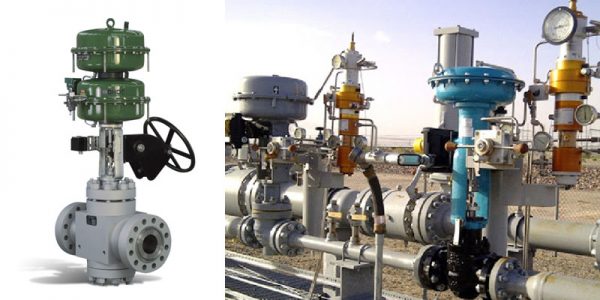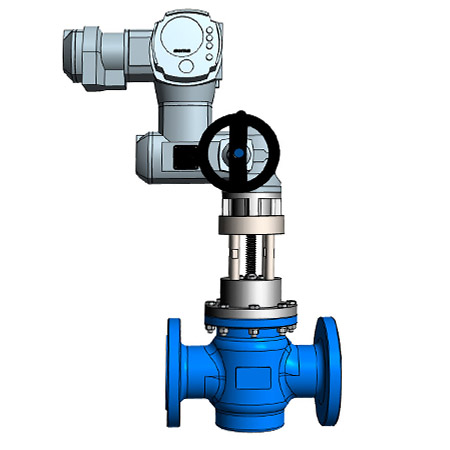Maximizing System Control with High-Performance Control Valves
Wiki Article

Maximize Power Cost Savings and Comfort With Advanced Building Automation Controls
In the realm of modern-day architecture and facility management, the assimilation of sophisticated structure automation regulates stands as an essential innovation. The merging of innovation and sustainability has actually birthed a brand-new period where energy efficiency, comfort optimization, and operational streamlining are no longer achievable realities however remote aspirations. By using the power of automation, buildings can adapt, respond, and develop in manner ins which were once unthinkable. The possibility for substantial power savings and boosted comfort is not simply a guarantee but an opportunity waiting to be satisfied. This standard shift in structure monitoring holds the crucial to opening a world where environmental conscientiousness and owner health sympathetically exist side-by-side within the wall surfaces of our structures.Energy Performance Perks
Energy effectiveness benefits can considerably decrease energy intake and functional expenses in buildings. Energy-efficient systems, such as sophisticated building automation controls, can maximize the usage of sources like lighting, cooling, and home heating, leading to lower power costs over time.Furthermore, enhanced power effectiveness can prolong the lifespan of structure equipment and systems. By running a lot more efficiently, a/c systems, lighting fixtures, and other structure components experience much less deterioration, resulting in minimized maintenance and substitute expenses. In addition, energy-efficient buildings frequently regulate higher residential or commercial property worths and rental rates, providing long-lasting financial advantages to owners.
Moreover, energy performance can improve occupant comfort and productivity. Effectively controlled indoor atmospheres with optimum illumination and thermal problems create an even more enjoyable and helpful workspace, causing improved worker satisfaction and performance. On the whole, the energy effectiveness advantages associated with innovative structure automation controls are multifaceted, including cost savings, ecological stewardship, and occupant health.
Improved Convenience Control
Enhancing convenience control in building settings requires an advanced integration of sophisticated automation systems for optimal passenger well-being. By using innovative building automation controls, facilities can customize the indoor setting to satisfy the specific demands and choices of residents. These systems allow precise law of illumination, temperature level, and air flow, developing a comfy and productive ambience. Owner satisfaction and productivity are closely linked to thermal convenience, making it vital to have systems in position that can adjust to transforming problems in real-time.Boosted comfort control surpasses fundamental temperature adjustments. It consists of functions such as customized settings, tenancy sensors, and all-natural light use to create a responsive and vibrant atmosphere. By including these sophisticated controls, buildings can not just improve comfort yet additionally enhance energy efficiency by optimizing system procedures based upon real occupancy and use patterns. Inevitably, focusing on owner convenience via sophisticated automation systems leads to a more pleasurable and healthier indoor environment.
Operational Performance Improvements

In addition, the implementation of real-time surveillance and analytics tools allows structure operators to determine power inefficiencies and operational abnormalities promptly. By constantly monitoring energy use patterns and system performance metrics, modifications can be made in real-time to maximize energy usage and make certain peak operational efficiency. control valves. Additionally, incorporating demand response methods right into structure automation controls can further enhance operational special info effectiveness by dynamically readjusting power usage based upon grid problems and pricing signals
Indoor Climate Optimization
Effective indoor environment optimization is a basic facet of building automation controls, guaranteeing passengers' convenience and health while making best use of energy cost savings. By using innovative sensing units and controls, constructing automation systems can continuously readjust and check temperature, humidity levels, air high quality, and air flow to develop an optimal indoor atmosphere. Maintaining regular and comfy problems not just boosts resident contentment but likewise improves productivity and general health.Interior climate optimization likewise plays an essential function in power effectiveness. By fine-tuning cooling, air flow, and heating systems based on real-time information and tenancy patterns, developing automation controls can substantially decrease power usage - control valves. Carrying out techniques such as demand-controlled air flow and thermal zoning can help decrease power waste while making certain that each area of the structure gets the necessary conditioning.

Lasting Atmosphere Development
Building automation controls not only optimize interior environment problems for energy efficiency and occupant comfort yet additionally lay the structure for producing a sustainable atmosphere with tactical administration of resources and systems. By integrating innovative structure automation modern technologies, such as sensing units, actuators, and smart software program, centers can change and keep track of energy use in real-time to lessen waste and decrease their carbon footprint. These systems make it possible for anticipating maintenance, identifying potential issues before they escalate and optimizing equipment performance to boost longevity and efficiency.Furthermore, sustainable atmosphere development prolongs beyond energy administration to encompass water preservation, waste reduction, and indoor air high quality improvement. Structure automation controls can control water use, identify leaks, and make certain appropriate waste disposal methods, adding to general sustainability efforts. Additionally, by keeping track of and controlling air flow and filtering systems, these innovations improve resident health and performance while decreasing energy consumption connected with HVAC procedures.
Final Thought
To conclude, progressed structure automation manages offer significant benefits in regards to power cost savings, comfort control, functional effectiveness, indoor environment optimization, and producing a sustainable atmosphere. By executing these controls, structures can accomplish optimum performance while reducing energy intake and enhancing occupant comfort. It appears that making use of sophisticated automation technology is vital in boosting structure performance and producing an extra lasting future.Energy performance advantages can considerably reduce energy usage and functional costs in buildings. Overall, the energy efficiency benefits associated with advanced building automation controls are multifaceted, encompassing cost financial savings, ecological stewardship, and owner well-being.
Additionally, including need feedback methods right into building automation controls can further enhance functional effectiveness by dynamically adjusting power use based on grid problems and rates signals.
Structure automation manages not just enhance indoor environment conditions for energy performance and passenger comfort yet likewise lay the foundation for developing a sustainable environment via tactical management of sources and systems.In conclusion, progressed building automation regulates deal significant advantages in terms of energy savings, convenience control, operational performance, interior environment optimization, and producing a sustainable atmosphere.
Report this wiki page